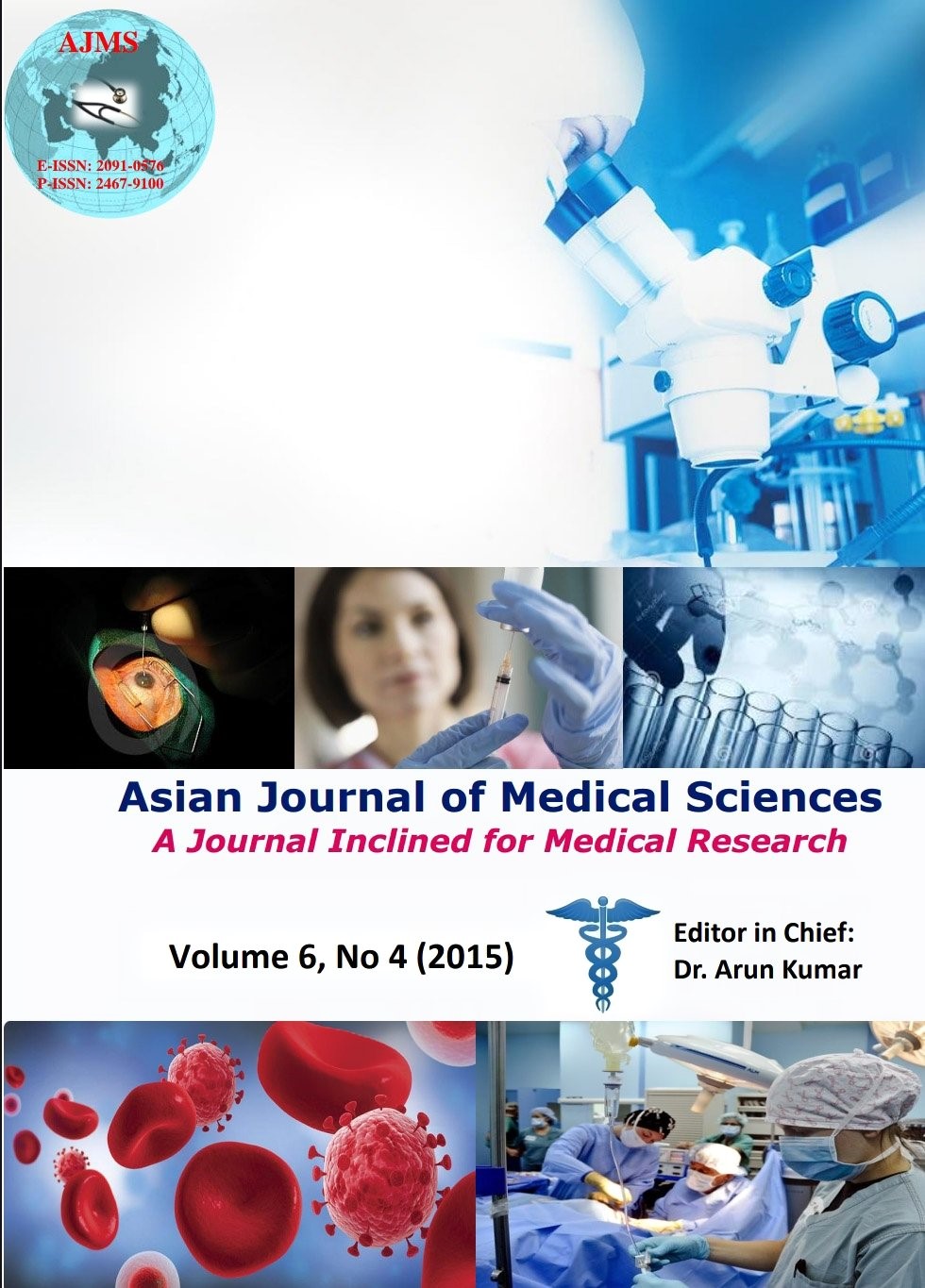Glycaemic status is an important risk factor for the occurrence of diabetic retinopathy in newly diagnosed type 2 diabetic patients
Keywords:
HbA1c, Diabetes, RetinopathyAbstract
Objective: To assess the frequency of diabetic retinopathy (DR) and correlation with HbA1C in newly diagnosed type 2 diabetic patients.
Patients and research methods: The study was conducted at a tertiary care medical centre in north india.All patients of >30 to <60 years of age, who were newly(within a month) diagnosed type 2 diabetes mellitus, according to world health organization(WHO)criteria and american diabetes association(ADA) recommendations,were included in the study. HbA1C was estimated from venous blood collected in ethylene diamine tetra acetic acid(EDTA) test tube, using boronate affinity chromatography (HPLC).Diabetic retinopathy was assessed by fundus examination using direct ophthalmoscope after dilatation of pupils.Early treatment diabetic retinopathy study(ETDRS) scale was used to assess the severity of diabetic retinopathy.
Results: 28 % of the newly diagnosed cases were found to have diabetic retinopathy, of which 73.52% were of mild NPDR (non-proliferative diabetic retinopathy) and 26.47% were of moderate NPDR. Mean FPG of population with retinopathy was 194.05 ±29.82 mg/dl and that of population without retinopathy was 175.67 ± 27.71mg/dl. Mean HbA1C of population with retinopathy was 7.71±1.01%and that of population without retinopathy was 7.22 ± 0.74.
Conclusions:
Mild NPDR is the most common form of diabetic retinopathy in newly diagnosed type 2 DM patients. Study demonstrated a very significant positive correlation between level of glycosylated hemoglobin (HbA1C) and frequency of diabetic retinopathy in these cases. So, glycaemic status is an important risk factor for the occurrence of diabetic retinopathy.
DOI: http://dx.doi.org/10.3126/ajms.v6i4.11745
Asian Journal of Medical Sciences Vol.6(4) 2015 36-39
Downloads
Downloads
Published
How to Cite
Issue
Section
License
Authors who publish with this journal agree to the following terms:
- The journal holds copyright and publishes the work under a Creative Commons CC-BY-NC license that permits use, distribution and reprduction in any medium, provided the original work is properly cited and is not used for commercial purposes. The journal should be recognised as the original publisher of this work.
- Authors are able to enter into separate, additional contractual arrangements for the non-exclusive distribution of the journal's published version of the work (e.g., post it to an institutional repository or publish it in a book), with an acknowledgement of its initial publication in this journal.
- Authors are permitted and encouraged to post their work online (e.g., in institutional repositories or on their website) prior to and during the submission process, as it can lead to productive exchanges, as well as earlier and greater citation of published work (See The Effect of Open Access).




